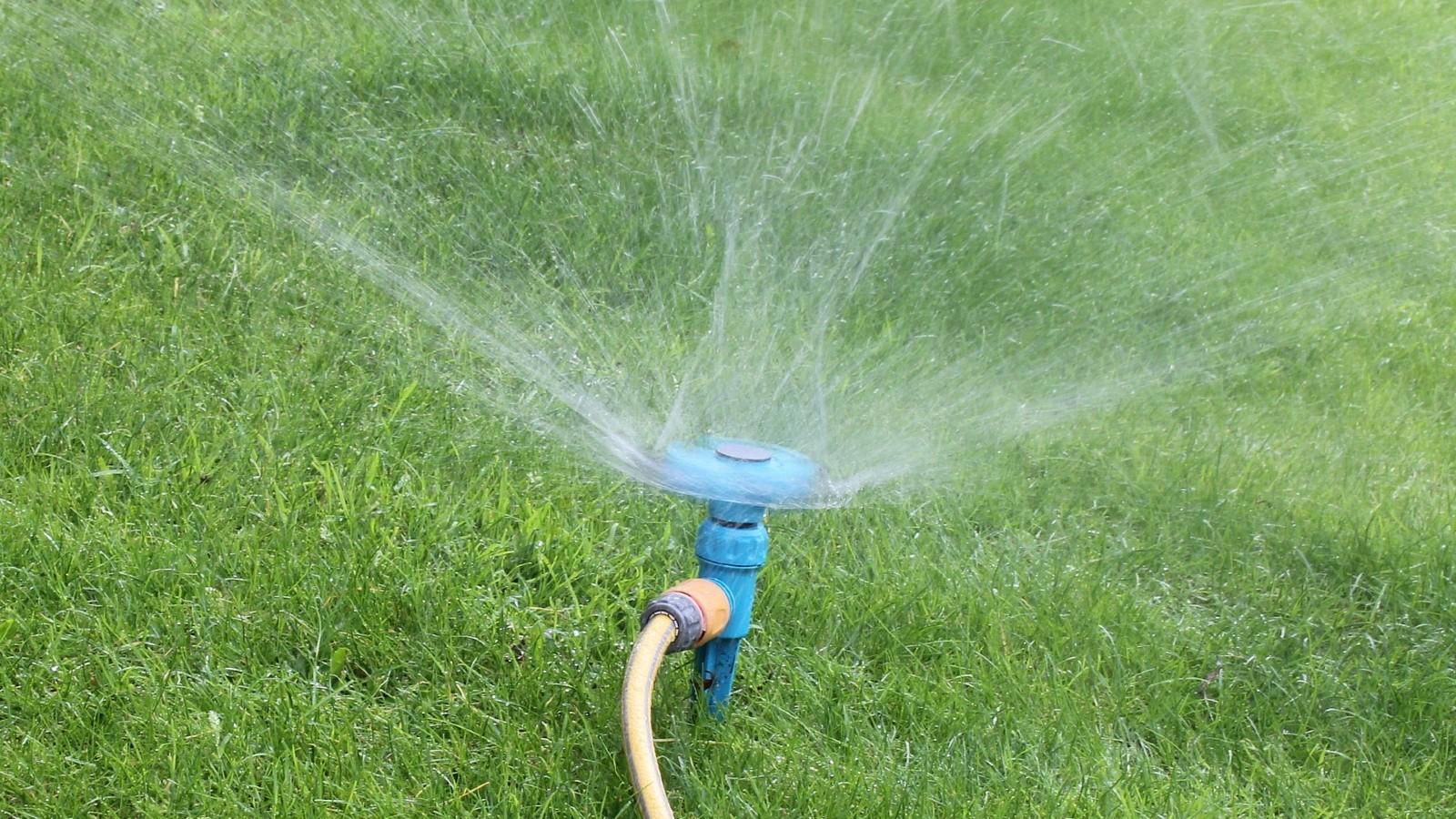Care after lawn renovation, for at least the first two months, is important for successful seeding. Changing weather patterns in Maryland including warmer than normal temperatures in late summer and fall, fluctuating periods of very wet, and then very dry weather are making seeding more challenging even during the recommended time for lawn projects. Seeding in the fall and then again in the spring may be necessary for a thicker lawn if all of the seed did not germinate and grow with your first attempt.
Watering
- Watering is critical to successful lawn establishment. Once wet and seed germination has begun do not let the seed dry out. Postpone reseeding an area during a drought if irrigation cannot be provided.
- A newly seeded lawn requires daily watering during dry periods.
- When conditions are windy and dry, the planted area may require several light waterings a day. Pay special attention to soil moisture on hot, windy days, when humidity is low.
- Sandy soils dry out quickly and require more frequent irrigation. Watering with a light mist is best. The idea is to keep the top layer of soil moist but not saturated.
- As seedlings grow and mature, the frequency of watering is decreased, but the duration of watering is increased. The water now needs to be available at the root zone and should penetrate the soil so that the top 4-6 inches of soil is moist.
- It is best to water earlier in the day so leaf blades do not remain wet overnight.
Mowing
- Proper mowing technique is an important part of a lawn maintenance program that is often overlooked. Mowing lawns too short (scalping), or infrequently, causes grass to become susceptible to drought injury, weed infestations (especially crabgrass), and foot traffic injury.
- Begin to mow the new turf when it reaches a height one-third higher than the normal mowing height (e.g., if a 3-inch height is desired, mow when the turf reaches 4 inches). Typically, under optimum growing conditions, this is four to six weeks after seeding. And when mowing during the season follow the “one-third” rule. Remove only one-third of the vegetation (measure from the soil line to the blade tips) at each mowing. Removing too much of the leaf blade at each cutting stresses the new lawn.
- Soil should be dry enough so that ruts are not formed by the wheels of the lawnmower.
- Mower blades should be sharp, so a clean cut is made.
- Generally, mowing needs to be done on a weekly basis during the growing season.
Fertilizing
- Fertilizer applied according to soil test results during the initial seeding period is sufficient for 6-8 weeks. Follow-up applications of fertilizer are made as part of a regular maintenance program. For cool-season turf, if the seeding was done in the fall, fertilizer cannot be applied later than November 15th. For seed sown in spring, do not apply after June 1st. Refer to the University of Maryland Extension home lawn fertilizer schedule.
Weeds
- Tilling the seedbed exposes dormant weed seeds to water and light prompting them to start to grow. Competition from weeds is greatest on turf sown in early spring. Hand pull the weeds in small areas.
- Grass seedlings are sensitive to chemical injury, so broadleaf herbicides should not be applied until the lawn has been mowed at least three or four times. Follow label directions.
Traffic
- Young seedlings are easily injured. Newly seeded areas should be restricted from foot traffic for a least a month after the seed has germinated or until the new lawn has been mowed at least a couple of times.
By Debra Ricigliano, Maryland Certified Professional Horticulturist, University of Maryland Extension Home and Garden Information Center (HGIC), 2019. Reviewed and edited by Jon Traunfeld, HGIC Director.
Based on HGIC publication HG 102 Lawn Establishment, Renovation, and Overseeding
